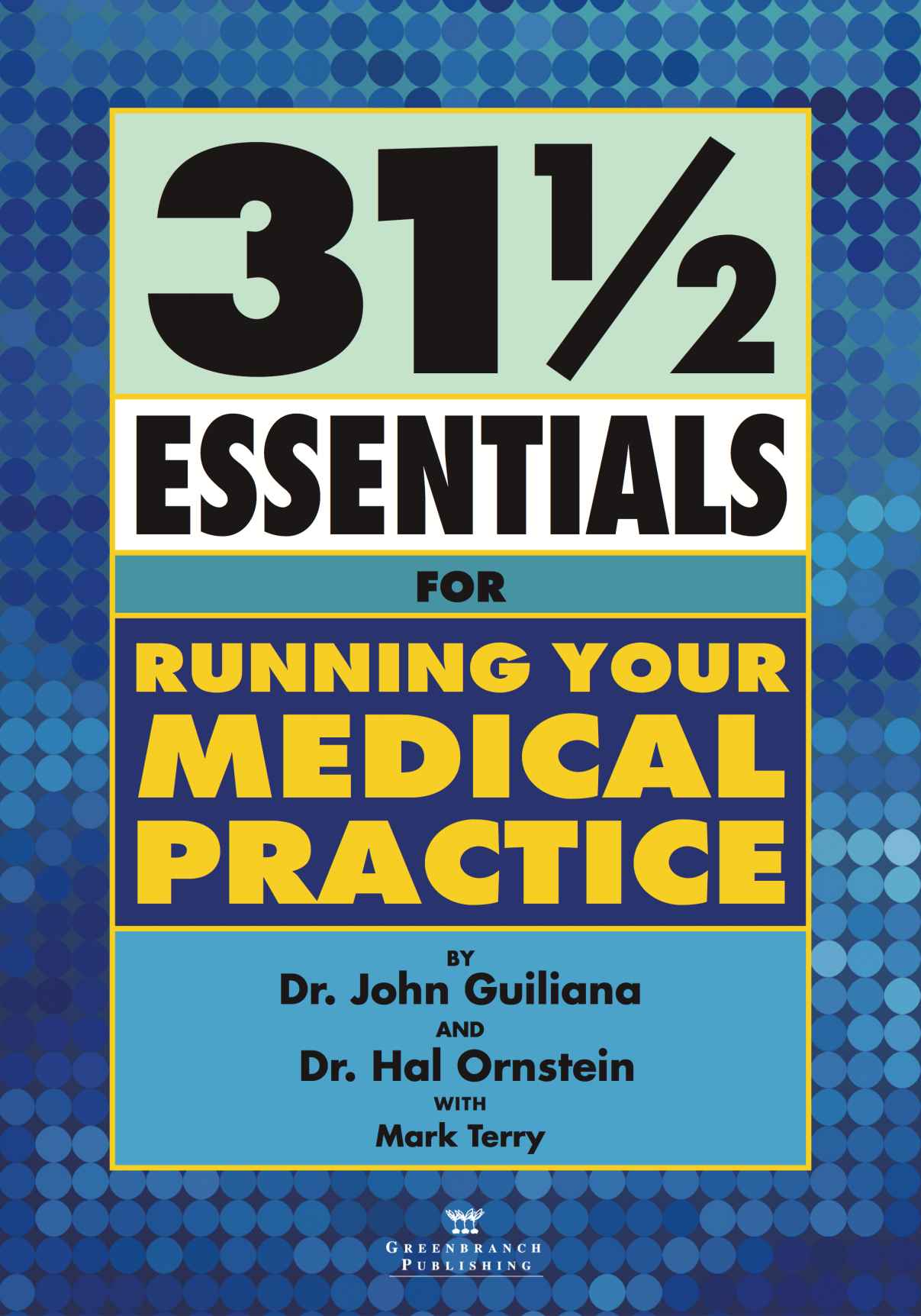31 1/2 Essentials for Running Your Medical Practice by Dr. John Guiliana & Dr. Hal Ornstein & Mark Terry

Author:Dr. John Guiliana & Dr. Hal Ornstein & Mark Terry
Language: eng
Format: mobi
Tags: Physician, Medical Practice Management, essentials, business, Guiliana, podiatry, Ornstein, administrator, Greenbranch Publishing, business of medicine, medicine, 31-1/2 Essentials, MD/MBA, office manager
Publisher: Greenbranch Publishing
Published: 2015-06-16T14:00:00+00:00
Essential #18:
Controlling Overhead
Don’t get eaten alive! Evaluating and controlling your costs, including salaries, benefits and other expenses.
A business can raise revenue in 2 ways: Increase business or cut costs. Although much of this book deals with direct and indirect ways to increase revenue and run your practice efficiently, attention needs to be paid to controlling overhead. Over the last 15 years, most group practices have reported that costs have risen 35% or more, but revenue has only increased by about 21%. That’s seriously out of whack.
FIRST THINGS FIRST
You can’t start slashing your budget until you know exactly how much you’re spending and what you’re spending on. You really need to drill down into your profit/loss (P/L) statement and find the details, or granularity, as the business-speak folks like to say.
Most medical practices’ P/L statements don’t provide enough detail. This can cause no end of trouble when trying to determine where to cut. For example, often the category that is largest—salary—seems like the first place to start cutting. That may be true, but by creating more detailed “buckets,” or line items, you can get a more nuanced approach to budget cutting.
Another example is “supplies.” That simply does not provide enough detail to be useful. There needs to be subcategories, such as “medical supplies” and “administrative supplies” and so on.
Salaries, then, isn’t accurate: You need staff benefits, staff salaries, payroll taxes, education expenses, overtime. Once you have your categories broken down, it’s much easier to compare expenses and overhead against national benchmarks for your practice’s specialty areas. If your practice spends more than others in your specialty area on specific line items like salaries, supplies or rent, then you can analyze those line items to determine why that is.
Granted, national averages are not necessarily the most useful indicator of your expenses, but can point to areas that may be problematic. There also may be very good reasons for your specific areas to be higher than the national average. Perhaps you offer extended hours or perform a great deal of emergency care, resulting in higher staff expenses. Alternately, the type of care you offer may result in higher revenue per volume than other practices.
“National averages are not necessarily the most useful indicator of your expenses, but can point to areas that may be problematic.”
Download
This site does not store any files on its server. We only index and link to content provided by other sites. Please contact the content providers to delete copyright contents if any and email us, we'll remove relevant links or contents immediately.
| Administration & Medicine Economics | Allied Health Professions |
| Basic Sciences | Dentistry |
| History | Medical Informatics |
| Medicine | Nursing |
| Pharmacology | Psychology |
| Research | Veterinary Medicine |
Good by S. Walden(3489)
The Social Psychology of Inequality by Unknown(2941)
0041152001443424520 .pdf by Unknown(2784)
The Checklist Manifesto by Atul Gawande(2779)
The Meaning of the Library by unknow(2506)
Guns, Germs and Steel by Diamond Jared(2304)
Borders by unknow(2231)
23:27 by H. L. Roberts(2197)
And the Band Played On by Randy Shilts(2131)
Get What's Yours for Medicare: Maximize Your Coverage, Minimize Your Costs by Philip Moeller(2105)
Being Mortal: Medicine and What Matters in the End by Atul Gawande(2086)
A Leg to Stand On by Oliver Sacks(2006)
The Hot Zone by Richard Preston(1983)
The Valachi Papers by Peter Maas(1815)
The Laws of Medicine by Siddhartha Mukherjee(1757)
The Andromeda Strain by Michael Crichton(1697)
The Obesity Epidemic by Robyn Toomath(1648)
Pharmacy Practice and The Law by Richard Abood(1544)
Autism's False Prophets by Paul A. Offit(1496)
